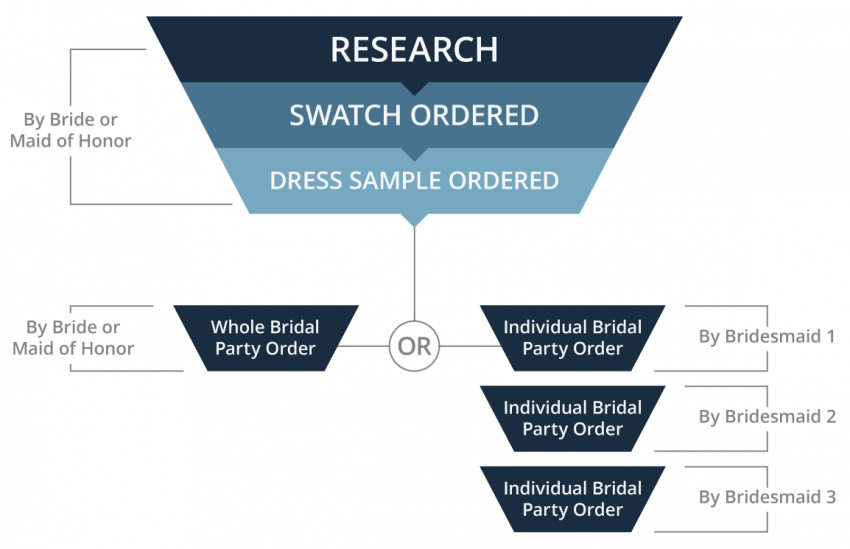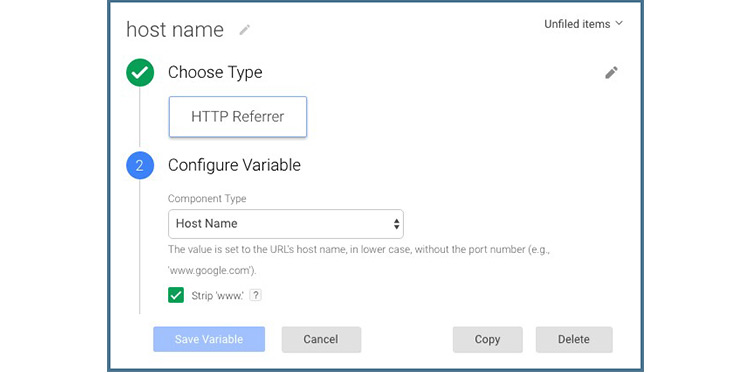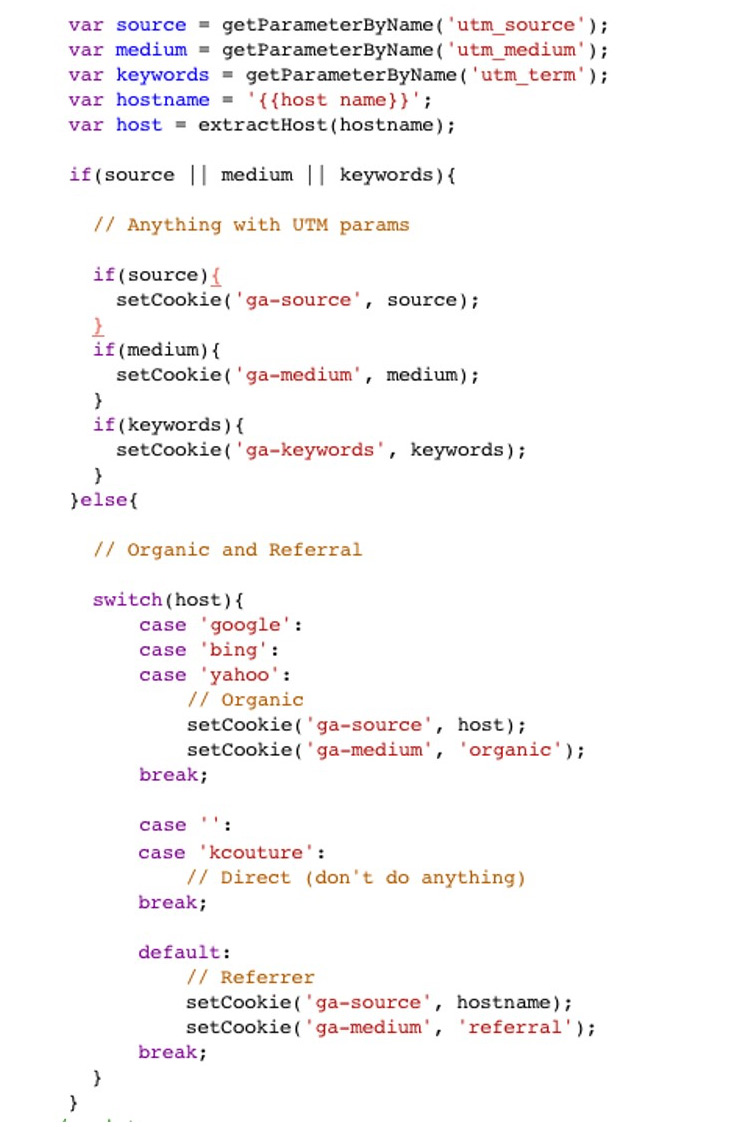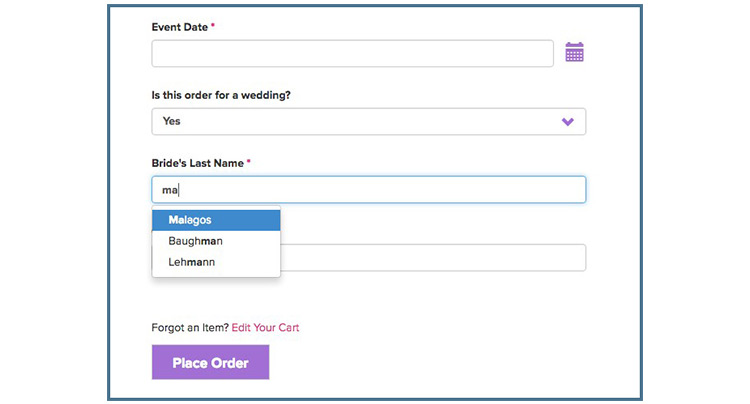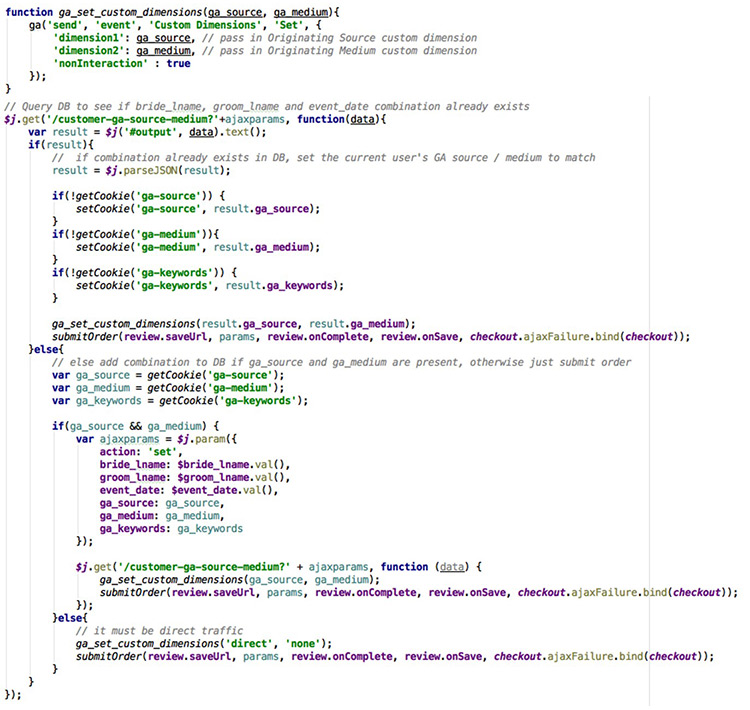The Challenge
Zion & Zion serves as K Couture’s digital marketing agency. After we developed the client’s brand, eCommerce website, and digital marketing strategy, we had an additional challenge to address–namely that of marketing attribution. But in this particular case, there was a plot twist.
In most eCommerce scenarios, you would use something like Google Analytics’ Multi-Channel Funnels to determine how many conversions took place and how much revenue was generated by visitor journeys that included a particular marketing channel. Examples of such channels include paid search, referral, organic, direct, and social. However, our question for K Couture was more complex than out-of-the-box Google Analytics tracking and reporting could answer.
Our question was:
How do we give credit, i.e. attribute, ALL online sales from individual members of a bridal party to the same Source and Medium to which Google Analytics attributed the FIRST sale from that party?
The reason for this need is simple. When it comes to bridal parties, the bride or the maid of honor are often performing the initial research. In the case of K Couture’s website, each member of the bridal party is able to place their order separately, so we wanted to be able to accurately attribute all sales within a specific bridal party to that initial site visit.
K Couture Order Funnel
